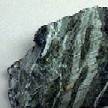Asbestos

What is asbestos?
Where does asbestos come from?
How was asbestos used?
Is asbestos still used in products today?
Is asbestos a problem in Tennessee?
What are the health effects of asbestos?
What is Mesothelioma?
How much asbestos is dangerous to my health?
Where can asbestos be found today?
How can I find out if I have asbestos in my home?
What should I do if asbestos is in my home?
Could there be asbestos in my child’s school?
Environmental Protection Agency (EPA) views on asbestos
Additional resources

What is asbestos?
Asbestos is the generic name given to the fibrous variety of six main naturally occurring minerals that have been used in commercial products. These minerals are made up of fibrous bundles. These fibers are long and thin, and they can be easily separated from one another. Asbestos minerals have physical properties (high tensile strength, flexibility, resistance to heat and chemicals, high electrical resistance, and the capability to be woven like fabric) that make them useful in many commercial products.
Where does asbestos come from?
Asbestos minerals come from metamorphic rocks. Significant deposits of asbestos are located in the western United States. However, the mountains of North and South Carolina also have extensive deposits of asbestos minerals. Some small deposits are found in the Smoky Mountains of East Tennessee. There is currently no production of asbestos in the United States. Most of the asbestos used here is imported from Canada and Brazil.
How was asbestos used?
It has been estimated that asbestos was once used in more than 3,000 different products. Asbestos can be found in vinyl flooring, patching compounds and textured paints, sprayed acoustic ceilings, acoustic ceiling tiles, stove insulation, furnace insulation, pipe insulation, wall and ceiling insulation, roofing shingles and siding, home appliances, fire-retardant clothing, vehicle brake pads, cement pipe, and potting soil.
Is asbestos still used in products today?
Yes. Asbestos is still used today. Because of its unique physical properties, it remains an important component of many products. The major manufacturing uses in the United States are: asphaltic roofing compounds used on commercial buildings (61%), gaskets (19%), and friction products, such as brake shoes and clutches (13%). Most of these products are utilized on a commercial basis and are installed under conditions regulated by OSHA. Today, asbestos has been found in consumer products imported from other countries. There are also consumer products such as potting soil and home insultation that have the asbestos containing mineral, vermiculite. Asbestos-containing products are not manufactured in the U.S. specifically for use by the general public.
Is asbestos a problem in Tennessee?
It would depend upon the context of an individual’s contact with asbestos.
- Is asbestos the cause of major public health concerns in our state today? No.
- Is asbestos a hazard to commercial and industry workers that have contact with it on a daily basis? Due to government regulation, this is unlikely. In the years before government regulation, asbestos exposure was an occupational hazard.
In the United States, asbestos containing products available to the general public have essentially been eliminated. Its use today is mainly limited to commercial and industrial applications. Federal government regulations require the protection of the health and safety of persons that use materials containing asbestos in their occupations. The primary public health hazard is the inadvertent or uncontrolled contact with old materials or imported products that contain asbestos materials and are not intact.
What are the health effects of asbestos?
You will not be harmed by touching asbestos or being near materials containing it. Asbestos can cause health problems when inhaled into the lungs. If products containing asbestos are disturbed, microscopic, lightweight asbestos fibers are released into the air. Persons breathing the air may breathe in the asbestos fibers. Continued exposure increases the amount of fibers that remain in the lung. Fibers embedded in lung tissue over time may result in lung diseases such as asbestosis, lung cancer, or mesothelioma. Studies have shown that the combination of smoking and asbestos exposure is particularly harmful.
What is Mesothelioma?
When asbestos fibers are inhaled or ingested the fibers can attach to the heart, lungs, stomach lining, or in the lining of the testicles. Over a period of 10-50 years, the embedded fibers can trigger tumor growth. According to the National Library of Medicine, mesothelioma is a disease that most often affects people who worked jobs where they inhaled asbestos particles. Malignant mesothelioma is a rare and aggressive cancer. There are approximately 3,000 new cases of mesothelioma in the United States each year, with a median age of diagnosis at 74 years old. Pleural mesothelioma is the most common type, affecting the lungs. Patients typically experience weight loss, general fatigue, abdominal or chest pain, and fluid buildup. After a biopsy that confirms a mesothelioma diagnosis, there is an average life expectancy of only 12 to 21 months. Prognosis can improve with treatment, but options become limited after the cancer reaches stage III. Learn more from the National Cancer Institute's mesothilioma webpage. Mesothelioma.com is another source of information online.
How much asbestos is dangerous to my health?
There is no minimum concentration of asbestos fibers in the air that is considered safe for humans to inhale on a continual basis. The risk of developing adverse health effects is dependent upon the exposure (the amount of asbestos inhaled and the duration of time it was inhaled, typically measured in years) a person has had. Symptoms of lung problems do not usually appear until after 20-30 years of exposure to high levels of asbestos fibers (as might be found in an industrial setting). Most people do not develop health problems when exposed to small amounts of asbestos.
Secondhand asbestos exposure can occur from handling asbestos contaminated clothing or sweeping asbestos contaminated dust in homes of miners or ore processing workers.
Where can asbestos be found today?
Asbestos-containing material (ACM) can be found in many buildings (including public buildings and schools) and homes today. The older the building is, the more likely ACMs are present in the structure. Fortunately, most residential homes constructed within the past 20 years are not likely to contain any ACM.
How can I find out if I have asbestos in my home?
Usually, it is not possible to identify asbestos containing materials just by looking at them. Only a person trained in asbestos fiber identification using a special polarized light microscope can identify it. There are environmental consultants who can be hired to identify asbestos in building materials. Products containing vermiculite, which can commonly be contaminanted with asbestos minerals, can be indentified by the distince accordian-like form of the mineral.
What should I do if asbestos is in my home?
If you have ACM in your home, your choices are to remove it, contain it, or live with it. The recommended thing to do, if the ACM is in good condition, is to leave it alone. The only way it can affect your health is when the material is damaged and fibers become airborne. If it is moderately damaged, it is recommended that you manage it in place (repair the damage and contain it, possibly with a coat of paint or sealer). Removing and disposing of any ACM is expensive and also increases the likelihood of releasing the fibers into the air.
If you feel that you cannot live with it, then the services of an asbestos abatement contractor should be considered. There are commercial companies that can be hired to remove ACM from homes and buildings. The Tennessee Department of Environment and Conservation has Asbestos Accreditation Requirements for all persons and firms who perform asbestos activities in schools or public and commercial buildings, and training providers who offer asbestos training courses. It would be advisable to check out these companies with your local Better Business Bureau. Due to the expense involved with the removal of asbestos from a home, it is also recommended that a homeowner obtain bids from several companies.
Could there be asbestos in my child’s school?
Yes. Depending upon the age of the school building, there may be ACM present in the school your child attends. Don’t panic. This has been a recognized and thoroughly studied situation for over 30 years. To address this problem, Congress passed the Asbestos Hazard Emergency Response Act (AHERA), a provision of the Toxic Substances Control Act, in 1986. AHERA requires local educational agencies to inspect their schools for ACM and prepare management plans that make recommendations for the reduction of asbestos hazards. Should you have concerns about your child’s school, contact your local board of education and inquire about their asbestos management policies.
Environmental Protection Agency (EPA) views on asbestos
The following summarizes the five major facts that the EPA has presented in congressional
testimony:
Asbestos is hazardous and human risk of asbestos disease depends upon exposure.
- Prevailing asbestos levels in buildings - the levels school children and others face as building occupants - seem to be very low, based upon available data.
- Removal is often not a school district's or other building owner's best course of action to reduce asbestos exposure. In fact, an improper removal can create a dangerous situation when none previously existed.
- EPA only requires asbestos removal in order to prevent significant public exposure to asbestos, such as during building renovation or demolition.
- EPA recommends in-place management whenever asbestos is discovered. Instead of removal, a conscientious in-place management program will usually control fiber releases, particularly when the materials are not significantly damaged and are not likely to be disturbed.
Additional resources
Since concerns about asbestos have been in the public eye for over 20 years, there is a wealth of information available from many resources. For persons seeking more information concerning asbestos, visit the web links below.
Tennesssee Department of Health
Healthy Homes Website
www.tn.gov/healthyhomes
U.S. Environmental Protection Agency (EPA)
Indoor Air
www.epa.gov/asbestos
Region 4, Asbestos Informer
www.epa.gov/region4/air/asbestos/inform.htm
U.S. National Institutes of Health
National Cancer Institute
www.cancer.gov/cancertopics/factsheet/Risk/asbestos
U.S. Department of Labor
Occupational Health and Safety Administration (OSHA)
www.osha.gov/asbestos
Agency for Toxic Substances and Disease Registry (ATSDR)
Toxicological Profile for Asbestos
www.atsdr.cdc.gov/toxprofiles/tp.asp
ATSDR Asbestos Work
ATSDR.cdc.gov/asbestos/atsdr_asbestos_work.html#related_libby
National Institute for Occupational Safety and Health (NIOSH)
www.cdc.gov/niosh/topics/asbestos
Tennessee Department of Environment and Conservation (TDEC)
Division of Air Pollution Control
Division of Solid and Hazardous Waste